Marketing is weird. Software marketing is, like, really weird.
When what you’re doing is working, you feel like the all-seeing, all-knowing, marketing shaman (minus the staff and bodypaint) strutting like Beyonce into every meeting.
When what you’re doing isn’t working, you feel like hiding under your desk and waiting for Elon Musk to take over the world so you don’t have to make big decisions anymore.
And when you’re not really sure what’s what, but it seems to be going okay, you’re like a confused King Arthur clip-clopping his way to the Holy Grail...
...you just hope no one notices that you have no idea what you’re doing.
Software marketing is particularly challenging because you’re selling an intangible product, to a living, breathing, human audience, with only digital metrics to tell you how you’re performing.
You have to be a psychologist, a scientist, a statistician, a linguist, and a software expert all at once. With so many marketing methods and strategies to choose from, knowing what to implement, at what stage, and with what message, is like compressing an ocean of ideas into a raindrop of actions.
To help software marketers find direction and understand the madness, we’ve compiled a few software marketing techniques and strategies that we think are useful. Take a look at how these software marketing solutions work in the real world, and see what tips, plans, and strategies best align with your company.
Don’t Lean Too Heavily On Buyer Personas
We all know that a successful marketing strategy relies heavily on the ‘know your customer’ concept. It does get a bit tiresome - and so do the smiling stock images sitting in your file marked ‘customer personas’.
But knowing what makes your buyers tick is the backbone of every software marketing campaign, from your content marketing to the keywords you’re tirelessly trying to rank for.
But, before you go psycho-analyzing your customers like Dr Lecter, there is one thing you need to remember:
Software marketing is a bit different.
Remember that you’re dealing with B2B purchase decisions. That means Brian the Branch Manager isn’t making a decision based on his personality traits. Brian’s personal decision making is overtaken by his duty to the great big corporation that he slaves away for.
Before you use buyer personas to fuel your software marketing strategies, make sure you understand some of the nuances of B2B software customers. When customers are making decisions for an organization, understanding their psychometric traits will only get you so far.
To understand my point, you need to read this book by Bryan and Jeffrey Eisenberg.
Just kidding. This is the most interesting part. It’s called the four buying types:
| Logic | Emotion | |
|---|---|---|
| Fast | Competitive | Spontaneous |
| Slow | Methodical | Humanistic |
This is what they mean:
- Competitive buyers want to make the smartest decision faster than anyone else.
- Methodical buyers must analyze all the available information before feeling confident that their choice is 100% right.
- Spontaneous buyers like buying things. It’s fun, especially when you do it quickly.
- Humanistic buyers are led by empathy and emotion, they want to understand the organization they’re buying from before purchasing.
Although every person in the world fits into one of these categories, that’s when they’re making a personal purchasing decision. Once they’re making decisions on behalf of the company they work for, their personal buyer behaviour usually alters to be more representative of the company’s values and objectives.
So when you think about B2B software marketing, your prospect might have to get the green light from numerous figures or leadership groups before saying ‘yes’ to your product. Even if you are dealing with the head honcho, they’ll take some time to make sure the decision benefits the whole company.
So although Brian the Branch Manager is a competitive buyer at heart, and he’s moved by your ‘think-fast, act-now’ marketing messages, he’ll ultimately only make a purchase decision if it fits with the methodical approach of his company.
When dealing with B2B software marketing, your messages must deliver what a methodical decision-maker will be looking for - research, evidence, results, and education.
I’m not saying throw your cardboard cut-out of Brian the Branch Manager in the trash, it’s useful for those first-time sales calls when you need to make a personal connection with your prospect. But, to get the ‘yes’, the heart of your software marketing strategy must be results-driven to appeal to methodical business decisions.
Get Marketing Intelligence from Your Competitor’s Reviews
You’ve crunched the numbers, and your last ad campaign didn’t get the clicks you were hoping for. You’re feeling deflated. You thought you’d nailed it, but the results are enough to make you doubt your entire existence.
What do my customers want to hear? What’s the secret? This software is the best thing since that overused idiom, so why won’t people buy it?
Sure, it sounds like you’re fishing for a cheap swipe at the competition, but this is software marketing. You can prove that you’ve got the better alternative, and you can keep it classy.
If your competitors’ customers find something lacking in their product, you should see if your solution does a better job. If it does, you’ve found the angle for your next marketing campaign. Why? Because you’ve got hard evidence of what customers are looking for.
How to enhance SEO with competitor insights:
- Find your competitors on a prominent software review site
- Filter to 1, 2, or 3-star reviews (those are most likely to have complaints or issues)
- List the complaints or problems that are reasonable (come on, not all reviews are fair)
- Find cases where your software fills the gap or would perform better in the described scenario
- Implement those ideas into your software marketing strategy
Poor reviews aren’t just bad for a brand’s reputation, they serve competitors a marketing strategy on a silver platter. This minor software marketing tip could have powerful results because it can be used effectively by businesses of any size - this could be your first year, and you’ve already found a reason that you’re better than the competition.
For example, I looked at the reviews for Slack on G2. Everyone knows about Slack, they’re some of the top dogs in team management software. But, there are a few features (or lack of features) that people aren’t over the moon about.
A lot of the reviews (like this one above) complained about Slack’s inability to store conversations. So, a busy team leader might need to re-read important information or a helpful conversation, and they can’t scroll back to find it. If I was a marketer for a Slack competitor, and our product solved that problem, I’d be shouting that from the rooftops.
Remember: when you live and breathe software marketing and SaaS, you can lose the ability to think the way a customer does. Your perception of their priorities and what they see as valuable could be skewed, so keeping track of your own reviews is also crucial for your marketing to give customers what they want.
Sometimes A Survey Is All You Need
Yes, you can create powerful software marketing strategies when you understand what makes your customers tick. But you don’t have to be Jordan Peterson or Q from James Bond to figure out what your buyers want and how they behave online.
With SEO tools to use and SaaS marketing metrics to track, many software marketers fall into the trap of thinking that all customer behaviour can be explained with data.
But there will always be outliers and trends in human behaviour that can’t be explained with click-through rates and bounce rates. And if you want your software marketing to get results, you’ve got to fill in the gaps.
All it takes is a straight-up question. With a simple and effective survey, you can shine a light on the things that data can’t explain - how your customers feel about your branding, what sucks about your website, what they want to learn from your blogs. More often than not, customers are willing to tell you what they think (especially when a small incentive is offered), and they’ll appreciate you connecting with them.
Before you start interrogating your customers with poorly prepared surveys, ask yourself these questions:
- What specific insights are you looking for?
- What survey tool are you going to use?
- Can you refine your goal into 5-10 closed questions?
Source - Typeform
Once you’ve got a clear strategy behind your survey questions, you’ve got to send it to the right people, on the right platform, at the right time. Think about the design and functionality of your survey as well, because no one’s going to bother responding to something that’s not mobile-responsive.
We’ve got some advice for sending surveys to your customers:
- Use it as a CTA button in blogs, social media posts, and email newsletters
- Send a personalized email to your most responsive pool of subscribers
- Offer incentives such as a free upgrade or a discounted month on a subscription, or even a prize draw for a gift card
- Share the results of the survey with your customers
Surveys answer the questions that performance metrics can’t. Until computers can read minds (and Elon Musk is probably getting there), it’s your job to connect with your audience. The information you’ll get is priceless, and it’ll enhance future software marketing strategies.
Content Marketing, All Hail The King
It’s that time again. Time to talk about the most powerful strategy for software marketing - content. We’ve talked about it many times in our goldmine of articles about SaaS marketing, and here we are once again.
Investing in content marketing should be a no-brainer for anyone claiming to be a software marketing professional. Whether you’re writing blogs, creating videos, crafting whitepapers, or publishing case studies, every bit of high-quality content on your site is money in your inbound marketing bank.
It’s an evergreen investment that’ll support SaaS lead generation for as long as it stays valuable, educational, and engaging for your audience. That’s what makes inbound marketing 62% cheaper and more effective long-term than outbound ads.
But forming a strategy around your content marketing can be overwhelming. You’ve got all this stuff to do, and all these different campaigns to create, but when’s the most effective time to publish each form of content?
For example, a first-time visitor on your website won’t gain much value from a scientific whitepaper. They don’t even understand what your product does yet, so why would they be interested in a load of research about something they don’t yet recognize as valuable?
Here’s a simple guide to aligning your content marketing with your entire software marketing funnel:
| Stage | Content | Why? |
|---|---|---|
|
Awareness |
Landing page |
At the awareness stage, customers are discovering your software and the problem it solves. A dedicated landing page with strategic website copy immediately demonstrates your product’s value and steers visitors towards more targeted content. (To see what we mean, here’s some SaaS website design inspiration) |
|
Lead |
Blog |
Customers are engaged, now it’s time to build their trust in your brand. Blogs content that targets specific pain points and software benefits will nurture your leads. |
|
Trial |
How-to video |
To convince your customers that your software solves their problem or adds immense value, they have to try it for themselves. A simple but engaging how-to video can inspire your audience and build their confidence in using your software. |
|
Conversion |
Case study |
Your software is being trialled, but customers need solid proof to be convinced that it’s right for them. A case study showing the success of another customer is a meaningful way to show customers what they can achieve with your product. |
|
Retention |
Whitepaper |
Customers have converted and now pay for a membership, but don’t get complacent. Keep demonstrating your position as a leading provider and innovator with whitepapers demonstrating the thorough research and groundbreaking studies behind your software. |
Without a content strategy, you’re just chucking arbitrary blog posts and random videos into the ether - and they’re not valuable to anyone. When your content marketing is aligned with your customer journey, it’s your secret weapon to move prospects through each stage of your software marketing funnel - until they’re raving customers.
Influencer Marketing...Worth The Hype?
I know what you’re thinking. Influencers? Gross. We sell software, not slimming tea.
Yes, influencer marketing is a big ugly trend taking over the internet. The influencer marketing industry is on track to be worth up to $15 billion by 2022. So, as much as we cringe at models selling weight loss products even though they have a plastic surgeon on speed dial, there’s proof that influencer marketing works.
I think influencer marketing has a bad reputation because it’s been made famous, and infamous, by wild packs of bloodthirst-trapping Instagram models selling products that they never use.
But, the principle of influencer marketing makes perfect sense. You find someone who’s reputable and trusted by your target audience, someone with a large following and a track record of success in their industry, someone who hasn’t got famous through scandals, and you pay them to promote your product.
Influencer marketing is making businesses some serious money, as 65% of influencer marketing budgets will increase this year.
But, does it work for SaaS companies? How can you use influencers to boost your software marketing strategy?
Well, look at how Canva used influencer marketing with Guy Kawasaki. Guy Kawasaki, original Apple employee and silicon valley guru, put the Australian graphic design software company on the map. He became Canva’s ‘chief evangelist’ (praise be) and used his knowledge and influence to skyrocket their success.
This is the perfect example of a SaaS company using organic influencers for their software marketing, where a figure with a substantial following becomes a heartfelt promoter of a brand because they’ve established a great relationship with it.
Or, have you seen what Adobe’s been doing on Instagram? They’ve been sharing inspirational thoughts with influencers who are professional and authentic.
Sure, nothing’s being overtly advertised. But, by giving people a platform to share their stories, Adobe successfully builds brand awareness and a sense of trust and authenticity that makes humanistic buyers take note. Smart.
There are a few kinds of influencer marketing:
| Type | Definition | Best suited to... |
|---|---|---|
|
Macro-Influencers |
Celebrities or social media users with millions of followers. |
Big brands with big budgets. |
|
Micro-Influencers |
More ‘normal’ people with around 10,000 followers. |
Brands in niche markets, where the quality of influencer material is more important than the number of followers |
|
Brand Advocates |
Customers who rave about your company online, sharing reviews without expecting compensation. |
Brands with a large online following of people who are very active on social media. |
|
Organic Influencers |
When influencers become brand advocates. They’ve partnered with the brand due to a genuine belief in the product and relationship. |
Well, brands that are as good as they say they are! To get organic influencers on board, you’ve got to walk the talk. |
So, how do you find the right influencer for your brand? Well, consider these four factors:
- Authenticity
- Audience type
- Audience size
- Budget
Authenticity
Does it make sense for this influencer to work with your company? You should only collaborate with an influencer if they use your product and it provides value for them. If your brand image and the influencer’s image are too different, your customers will smell a scam and think you’re not being genuine.
Audience type
If you work with an influencer, their audience has to match your target audience demographic. Sure, an influencer might love using your software (and would love to get paid to talk about it), but if their audience is predominantly teenagers who don’t need project management software - what’s the point?
Audience size
Beware of influencers who advertise their combined following. You might find an influencer with $1m combined followers and get excited, but that figure represents all their combined social media platforms: Facebook, Instagram, LinkedIn, YouTube, Pinterest, Tumblr, etc. Turns out, they only have a few thousand followers on Instagram because they got Tumblr-famous as a teenager. How is that going to help your SaaS company?
Budget
You’ve got to stick with your budget. Ever wondered what your average influencer charges for an Instagram post or YouTube video mention? Check this out:
- Facebook: $25 per 1000 followers
- Instagram: $10 per 1000 followers
- Twitter: $2 per 1000 followers
- YouTube: $20 per 1000 followers
- Snapchat: $10 per 1000 followers or views
- Blogs: $60 per 1000 views
If you’re looking to strengthen your software marketing strategy, or try something different, don’t rule out influencer marketing because the Kardashians give it a bad reputation. If you can find a trusted expert with a large following and a genuine alignment with your company, this could be the method that skyrockets your software marketing results.
Paid Ads Are Often Necessary Necessary
We’ve been banging on about how inbound marketing methods are the most successful and cost-effective way to convert the leads that you generate. It’s true, and I’ll never stop talking about content marketing - but how are you going to get the audience to impress in the first place?
If you’re a software marketer, you should view your paid ads as the signposts that lead people to your website. Paid ads should whet someone’s appetite enough to seek more of your content and satisfy their desire to know more.
That’s why you need to make sure your paid ads are pointing traffic to valuable content that’ll take them down your marketing funnel - to become a paying customer.
So paid ads are critical because they get people to your powerful inbound software marketing strategies. There are just a few things to be aware of:
- Paid ads can be expensive
- People are wary of paid ad content
- Ad Blockers remove a lot of paid ad content
So, which options are going to get the most results? If you’re in software marketing and need to form a plan for paid ads, you’ve got many outbound strategies to choose. We’ll talk about two that we think are pretty safe...
- Google Ads or pay-per-click
- Retargeting / remarketing
Google Ads
Although people are becoming more able to discern and avoid paid ad content, search engine ads still get millions of clicks every day. That means that every software marketer in their right mind should put some of their advertising budget into PPC.
PPC is an important part of your software marketing strategy because it’s scalable. If you find that an activity is working and you’re getting a decent amount of leads from it, just increase the spend to generate more results. The predictability of PPC makes it especially reliable for newbie software marketers to experiment with their messaging and see which audiences on which platforms are most responsive.
A wise move would be to hire a SaaS marketing agency to plan, implement, and test your paid activity for you to make sure you’re putting the right message in front of the right audience without wasting precious time or money.
Retargeting
A Twitter user divided the internet when he explained that “the shopping cart is the ultimate litmus test” for whether someone is a good person. Thankfully, you can still abandon shopping carts online without people thinking you’re the antichrist.
Except, with retargeting, businesses can now direct ads towards people who’ve abandoned their site just as they were about to buy a product or download an eBook or sign-up to a newsletter.
Imagine if Walmart employees chased you down the street, yelling about how good the new flavour of Pringles is, just because you put the tube back on the shelf and walked out of the store? The internet is wild.
That’s basically retargeting. Software marketers can now have a second chance to win-back leads who, at the last second, didn’t follow-through with the conversion.
Make sure you’re directing leads towards valuable content and using CTA’s that are helpful as opposed to aggressive. You can’t just chase someone around on the internet with ads saying ‘WHY DIDN’T YOU BUY OUR THING?”.
Consider why they didn’t follow-through - ran out of time, second thoughts, wanted to look at competitors, or just weren’t convinced with your offering - and orient your messaging around handling those objections.
Conclusion: The Holy Grail Isn’t What You Get At The End, It’s The Strategy You Use To Get There
Software marketing isn’t for the faint of heart. But that doesn’t mean you have to throw your humanness out the window and focus on the metrics. Sometimes, your human instincts and emotions are what makes your marketing campaign even stronger - you are selling to other humans, after all.
With the software marketing techniques and strategies that work together, align with your customer journey, and demonstrate tangible results, you can take your software company from startup to market leader.
You just need to be willing to experiment with new methods, test the results, and stick to an approach that guarantees value, education, and authenticity to your customers.And if you need to discuss ideas with a few experts who know your industry, we’re right here.

Chris Onyett
Chris is one of the managing partners at Roketto. His area of expertise is digital marketing and loves sharing and educating on topics like Google Ads, CPC bidding tactics, Google Analytics, and marketing automation. When Chris isn't in the office, he enjoys playing volleyball, mountain biking, and hiking with his American Eskimo.












2.png)
2.png)









